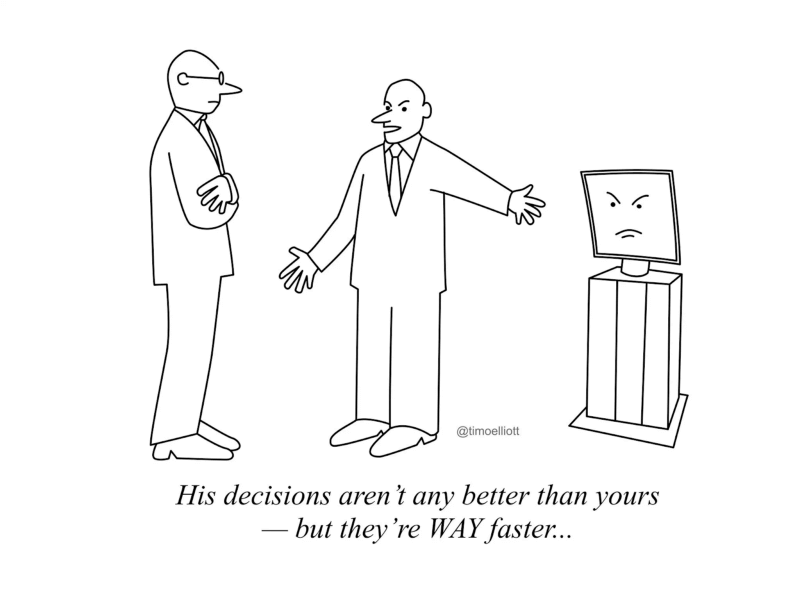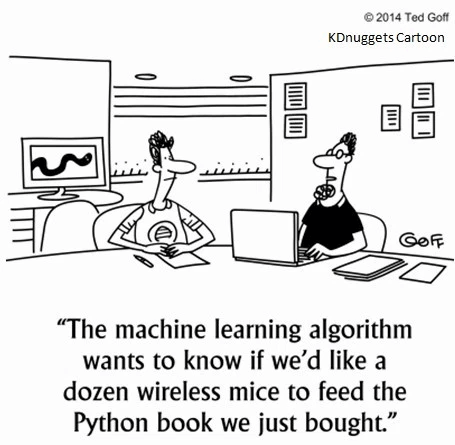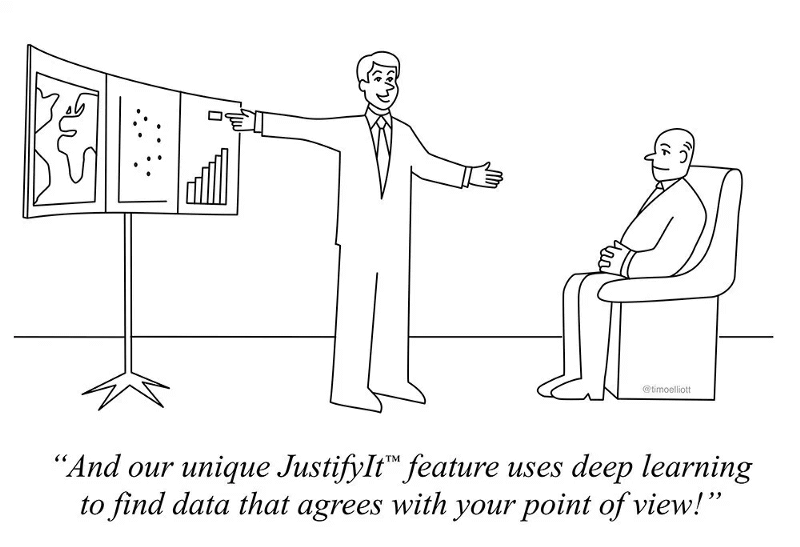Latest news about Bitcoin and all cryptocurrencies. Your daily crypto news habit.

Machine learning and deep learning are two subsets of artificial intelligence which have garnered a lot of attention over the past two years. If you’re here looking to understand both the terms in the simplest way possible, there’s no better place to be.
First of all, let’s have a look at some cool facts & stats of deep learning and machine learning:
— An AI specialist on your staff will cost you a net salary which is equal to one 2017 Roll-Royce Ghost Series II, or even more. AI specialists can fetch compensation of around $300,000 to $500,000. (The New York Times) — Could you lose your job to artificial intelligence? According to a recent report of PwC, maybe. By the 2030s, they predict that approximately 38% of all the U.S. jobs could be substituted by AI and automation technologies. — Heliograf, The Washington Post’s artificial intelligence writer, created around 850 stories in the year 2016 during the games of Rio Olympics and the presidential election of 2016. (The Washington Post) — By the year 2020, 57% of business buyers will solely depend on firms to know what they need before they can ask for anything. It means having solid prediction capabilities with artificial intelligence will be the key to keeping your clients. (Salesforce) — The first AI program, “The Logic Theorist,” was created in the year 1955 by Newell & Simon. (World Information Organization) — Researchers also predict that by 2020, 85% of customer interactions will be managed without a human. That’s only one year and some change away. (Gartner) — 80% of the executives believe artificial intelligence boosts productivity. (The Motley Fool) — The artificial intelligence or machine learning market will grow to a $5.05 billion industry by the year 2020. (The Motley Fool)
I hope you like these stats. Now, if you’ll stick with me for some time, I’ll try to explain what really is the difference between deep learning vs machine learning, and how can you leverage these two subsets of AI for new and exciting business opportunities.
Also Read: Top Mobile App Trends in 2019
Deep learning vs Machine learning
Before I start, I hope you would be familiar with a basic understanding of what both the terms deep learning and machine learning mean. If you don’t, here are a couple of simple definitions of deep learning and machine learning for dummies:
Machine Learning for dummies:
A subset of artificial intelligence involved with the creation of algorithms which can modify itself without human intervention to produce desired output- by feeding itself through structured data.
Deep Learning for dummies:
A subset of machine learning where algorithms are created and function similar to those in machine learning, but there are numerous layers of these algorithms- each providing a different interpretation to the data it feeds on. Such a network of algorithms are called artificial neural networks, being named so as their functioning is an inspiration, or you may say; an attempt at imitating the function of the human neural networks present in the brain.
I tried to put those definitions in the simplest way possible, but even if it didn’t help you make out any differences, here’s an example that will.
Have a look at the image above. What you’ll see is a collection of pictures of cats and dogs. Now, let’s say that you want to identify the images of dogs and cats separately with the help of machine learning algorithms and deep learning networks.
Deep learning vs machine learning basics: When this problem is solved through machine learning:
To help the ML algorithm categorize the images in the collection according to the two categories of dogs and cats, you will need to present to it these images collectively. But how does the algorithm know which one is which?
The answer to this question, as in the above definition of machine learning for dummies, is structured data. You simply label the pictures of dogs and cats in a way which will define specific features of both the animals. This data will be enough for the machine learning algorithm to learn, and then it will continue working based on the labels that it understood, and classify millions of other pictures of both animals as per the features it learned through the said labels.
Also Read: Top Mobile App Ideas You Can't-Miss in 2019
Deep learning vs machine learning: When the problem is solved through deep learning:
Deep learning networks would take a different approach to solve this problem. The main advantage of deep learning networks is that they do not necessarily need structured/labeled data of the pictures to classify the two animals. The artificial neural networks using deep learning send the input (the data of images) through different layers of the network, with each network hierarchically defining specific features of images.
This is, in a way similar to how our human brain works to solve problems- by passing queries through various hierarchies of concepts and related questions to find an answer.
After the data is processed through layers within deep neural networks, the system finds the appropriate identifiers for classifying both animals from their images.
Note: This is just an example to help you understand the differences in the way how machine learning basics and deep learning networks work. Both deep learning and machine learning are not actually simultaneously applicable to most cases, including this one. The reason for the same will be explained later as you read.
So in that example, we saw that a machine learning algorithm required labeled/structured data to understand the differences between images of cats and dogs, learn the classification and then produce output.
On the other hand, a deep learning network was able to classify images of both the animals through the data processed within layers of the network. It didn’t require any labeled/structured data, as it relied on the different outputs processed by each layer which amalgamated to form a unified way of classifying the images.
What have we learned here
- The key difference between deep learning vs machine learning stems from the way data is presented to the system. Machine learning algorithms almost always require structured data, whereas deep learning networks rely on layers of the ANN (artificial neural networks).
- Machine learning algorithms are built to “learn” to do things by understanding labeled data, then use it to produce further outputs with more sets of data. However, they need to be retrained through human intervention when the actual output isn’t the desired one.
- Deep learning networks do not require human intervention as the nested layers in the neural networks put data through hierarchies of different concepts, which eventually learn through their own errors. However, even these are subject to flawed outputs if the quality of data isn’t good enough.
- Data is the governor here. It is the quality of data which ultimately determines the quality of the result.
What we didn’t see in the example, but are important points to note:
- Since machine learning algorithms require labeled data, they aren’t suitable to solve complex queries which involve a huge amount of data.
- Though in this case, we saw the application of deep learning networks to solve a minor query such as this one. The real application of deep learning neural networks is on a much larger scale. In fact, considering the number of layers, hierarchies, and concepts that these networks process, they are only suited to perform complex calculations rather than simple ones.
- Both these subsets of AI revolve around data in order to actually deliver any form of “intelligence”. However, what should be known is that deep learning requires much more data than a traditional machine learning algorithm. The reason for this being that it is only able to identify edges (concepts, differences) within layers of neural networks when exposed to over a million data points. Machine learning algorithms, on the other hand, are able to learn through pre-programmed defined criteria.
So with that example and subsequent explanation of deep learning vs machine learning basics, I hope you would have understood the differences between both of them. Since these are layman explanations, I try my best to not introduce technical terms which are mostly incomprehensible to those looking to leverage AI and machine learning solutions for their business.
Now its time to hammer the final nail. When should you actually use Deep learning or machine learning in your business?
When to use deep learning?
- If you’re a firm with boatloads of data to derive interpretations from.
- If you have to solve problems too complex for machine learning.
- If you can spend a lot of computational resources and expenses to drive hardware and software for training deep learning networks.
When to use Machine learning development for your business?
- If you’ve data that can be structured and used to train machine learning algorithms.
- If you’re looking to leverage benefits to AI to surge ahead of the competition.
- The best machine learning solutions can help in the automation of various business operations, including identity verification, advertising, marketing, and information gathering and help leverage great opportunities for the future.
Wrapping Up:
I hope you like this blog. This blog will definitely help you clear all your doubts related to deep learning and machine learning. With the rise in different technologies, businesses nowadays are looking for technology consulting companies to find what is best for their business.
The rise of artificial intelligence will also give birth to rise in smart software development services, IoT app development, and blockchain development services. Nowadays, custom software developers are learning new ways of programming which is more inclined to deep learning and machine learning.
IF you want to add anything in the article, please mention in the comment box and don’t forget to clap and share the article. This will motivate me to write more such informative articles.
Deep Learning vs. Machine Learning: A Simple Explanation was originally published in Hacker Noon on Medium, where people are continuing the conversation by highlighting and responding to this story.
Disclaimer
The views and opinions expressed in this article are solely those of the authors and do not reflect the views of Bitcoin Insider. Every investment and trading move involves risk - this is especially true for cryptocurrencies given their volatility. We strongly advise our readers to conduct their own research when making a decision.


